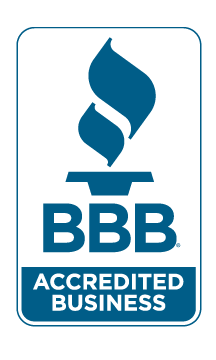As we settle into the first weeks of 2025, there’s no better time to refocus on ethics in the life insurance industry. The start of a new year offers the perfect opportunity to refine our practices, strengthen client relationships, and reaffirm our commitment to doing what’s right. Ethics, after all, remains the cornerstone of our profession, ensuring we meet regulatory requirements while building trust and fostering long-lasting connections with clients.
What is Ethics?
Ethics, derived from the Greek word meaning "moral character," is often defined as the study of moral principles that govern behavior. In simpler terms, ethics is about doing the right thing, the right way, for the right reasons. This golden rule—treating others as you would like to be treated—resonates deeply in the life insurance industry, where trust and integrity are paramount.
For insurance producers, ethics provides a roadmap for navigating the complex situations that arise in our profession. It helps us make sound decisions when faced with dilemmas that may involve conflicts of interest, ambiguous scenarios, or competing priorities. Ethical behavior isn't just about avoiding misconduct; it's about proactively fostering trust, respect, and loyalty among clients.
Why Ethics Matters in Life Insurance
Ethics is more than just a buzzword; it’s an essential ingredient for success in the life insurance industry. Clients expect honesty and transparency, especially when they’re entrusting us with decisions that impact their families’ financial futures. Surveys repeatedly show that ethical behavior is one of the most sought-after qualities in an insurance producer. Clients value professionals who prioritize their well-being and provide clear, straightforward guidance.
For insurance agents, strong ethical practices yield tangible benefits:
- Building Trust: Ethical agents earn the trust of their clients, leading to stronger relationships and higher client retention rates.
- Increasing Referrals: Satisfied clients are more likely to recommend an ethical producer to friends and family, fueling growth through word-of-mouth referrals.
- Enhancing Reputation: A reputation for integrity can differentiate you in a competitive marketplace and attract high-quality clients.
- Ensuring Compliance: Acting ethically reduces the risk of legal or regulatory penalties, safeguarding your career and livelihood.
Fraudulent Applications: A Serious Breach of Ethics
In the age of advanced technology and digital automation, the insurance industry faces unique challenges regarding ethical behavior. One of the most concerning issues is the submission of fraudulent applications by agents seeking to collect commissions. This unethical practice undermines the trust that forms the foundation of the life insurance industry and has far-reaching consequences.
Fraudulent applications can take various forms:
- Submitting false information about clients to secure policies.
- Creating fictitious clients or policies for the sole purpose of earning commissions.
- Encouraging clients to apply for policies they don’t need or cannot afford, solely to meet sales targets.
While these actions may seem like shortcuts to achieving performance goals, the repercussions are severe:
- For Clients: Fraudulent policies can leave clients unprotected when they need coverage the most, especially if false information leads to policy cancellations or claim denials.
- For Carriers: Insurance companies incur significant financial losses investigating and addressing fraudulent applications, which can result in stricter underwriting processes that affect legitimate clients.
- For the Agent: Agents caught submitting fraudulent applications face legal penalties, termination of contracts, and permanent damage to their professional reputations. In some cases, they may even face prosecution for insurance fraud.
Modern technology, such as advanced analytics and fraud detection systems, makes it increasingly difficult for unethical practices to go unnoticed. Carriers now utilize sophisticated algorithms to identify inconsistencies, unusual patterns, or suspicious activity in applications. While technology offers many benefits to honest agents—such as streamlining the underwriting process and improving client experiences—it also serves as a powerful tool for uncovering misconduct.
Upholding Integrity in a Digital World
As technology advances, so do the expectations for ethical behavior. Agents must adapt to these changes by prioritizing transparency and accountability in every transaction. Here are a few ways to maintain integrity in the digital age:
- Verify Client Information: Always ensure the information provided on applications is accurate and truthful. Double-check details with clients before submission.
- Educate Clients: Help clients understand the importance of providing truthful information and the potential consequences of inaccuracies.
- Embrace Accountability: Stay informed about the technologies carriers use and take pride in submitting applications that meet the highest ethical standards.
Fraudulent behavior has no place in the life insurance industry. By committing to integrity, agents can build lasting trust with their clients and contribute to a healthier, more sustainable marketplace.
Ethics and Compliance: Two Sides of the Same Coin
While ethics is about moral principles, compliance focuses on adhering to laws and regulations. Both are critical in the life insurance industry. Compliance ensures that we meet the legal standards set by regulatory bodies, while ethics helps us go beyond mere compliance to serve our clients with honesty and care.
For example, compliance may dictate that you disclose all policy details to a client, but ethics challenges you to explain those details in a way that ensures the client truly understands their options. This distinction highlights why ethics training is a vital part of professional development for insurance agents.
Common Ethical Dilemmas in Life Insurance
Insurance producers often encounter situations where ethical decision-making is tested. Here are a few common scenarios:
- Misrepresentation of Policies: Agents may feel pressured to oversell a policy or downplay its limitations to meet sales quotas. Ethical agents resist this temptation and provide accurate, honest information to clients.
- Conflict of Interest: When recommending a product, it’s essential to prioritize the client’s best interests over personal gain, even if it means earning a lower commission.
- Handling Client Information: Protecting clients' sensitive personal and financial information is both an ethical and legal obligation.
- Pressure to Meet Quotas: The drive to achieve sales targets should never come at the expense of ethical behavior. Agents must balance performance goals with the responsibility to act in clients’ best interests.
Why 2025 is the Year to Double Down on Ethics
The life insurance industry is evolving rapidly, with advances in technology, shifting client expectations, and an ever-changing regulatory landscape. As we navigate these changes, ethics will remain our guiding light.
Starting the year with a renewed focus on ethics offers several benefits:
- Building Resilience: Ethical practices create a solid foundation that can withstand market fluctuations and regulatory changes.
- Fostering Innovation: By prioritizing client needs, ethical agents can develop creative solutions that deliver real value.
- Strengthening Relationships: In an increasingly digital world, trust and authenticity are more important than ever. Ethical behavior helps agents forge meaningful connections with clients.
Final Thoughts: A Call to Action
As we embark on a new year, let’s make a collective commitment to uphold the highest ethical standards in the life insurance industry. Whether you’re a seasoned professional or just starting your career, remember that every decision you make reflects not only on you but also on the industry as a whole.
By prioritizing ethics, we can elevate our profession, build lasting client relationships, and set the stage for a successful 2025. Let’s embrace this opportunity to lead with integrity, serve with honesty, and inspire trust in every interaction.
Here’s to a year of ethical excellence—let’s make 2025 our best year yet!
© Copyright











